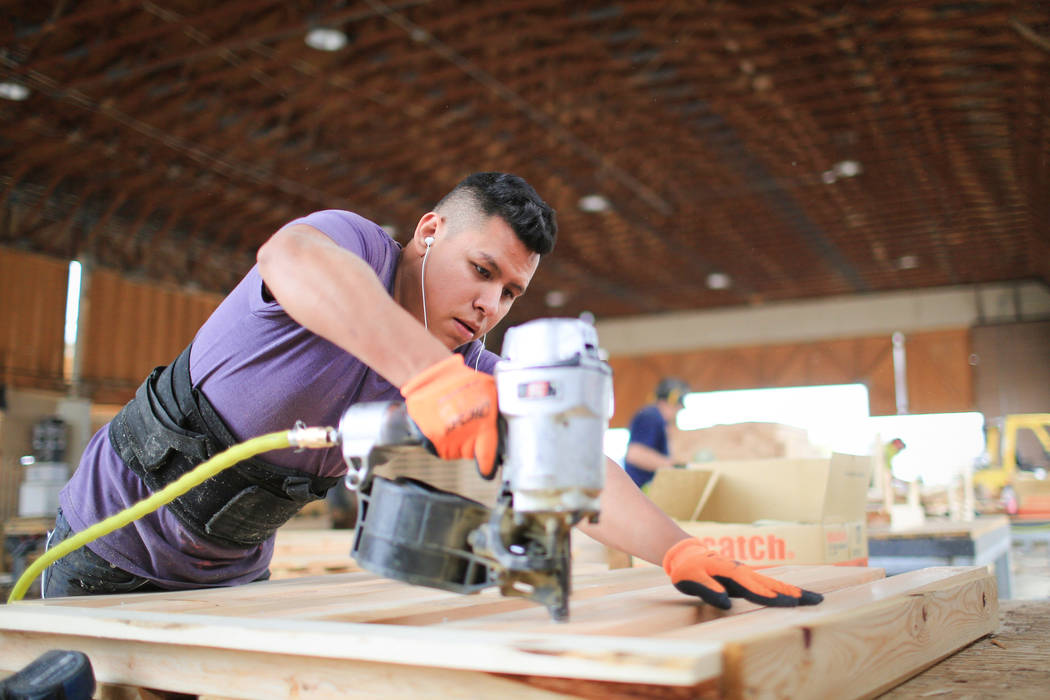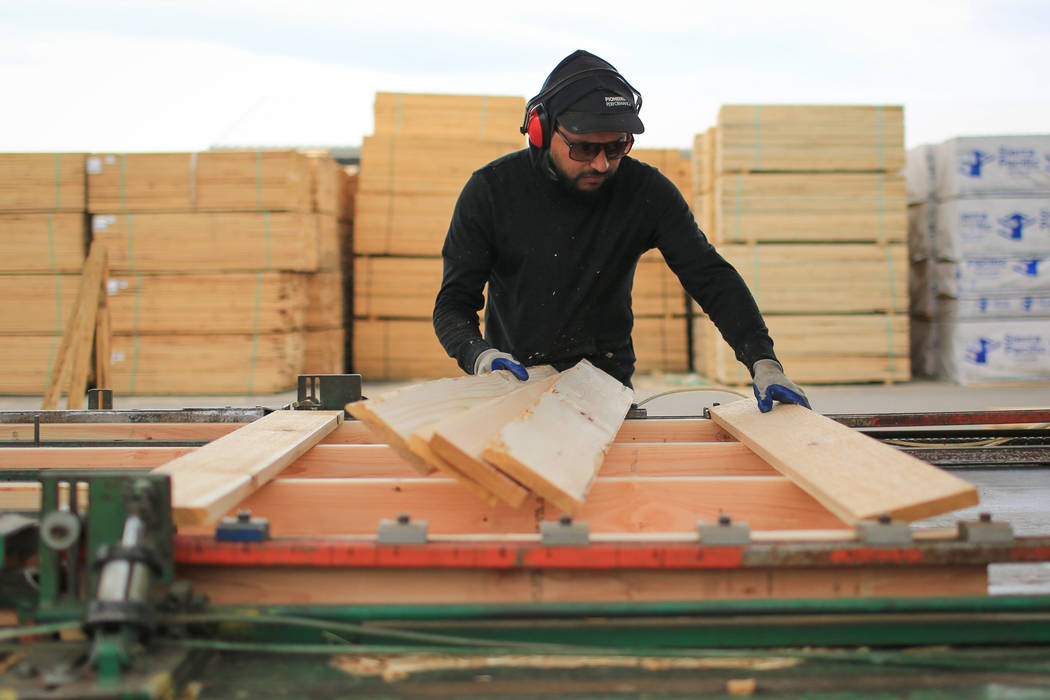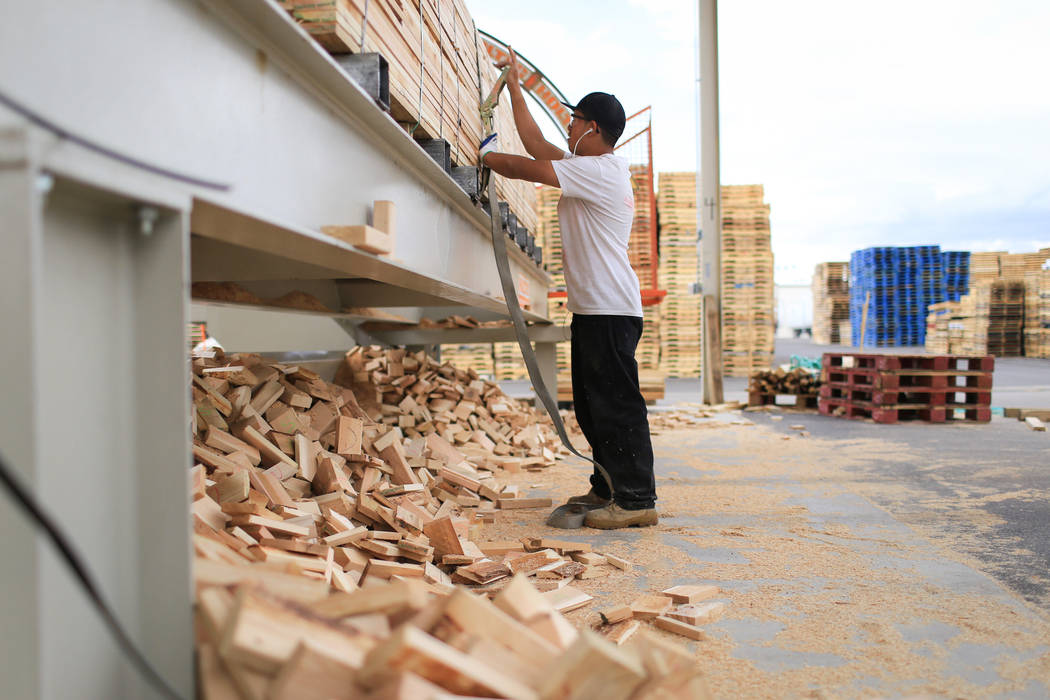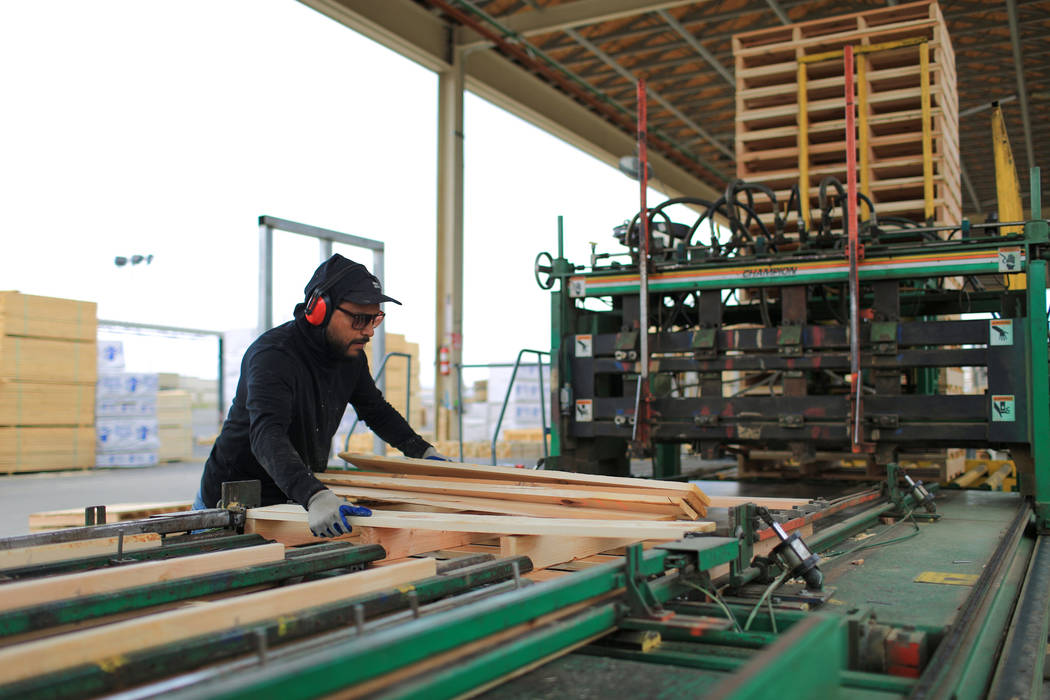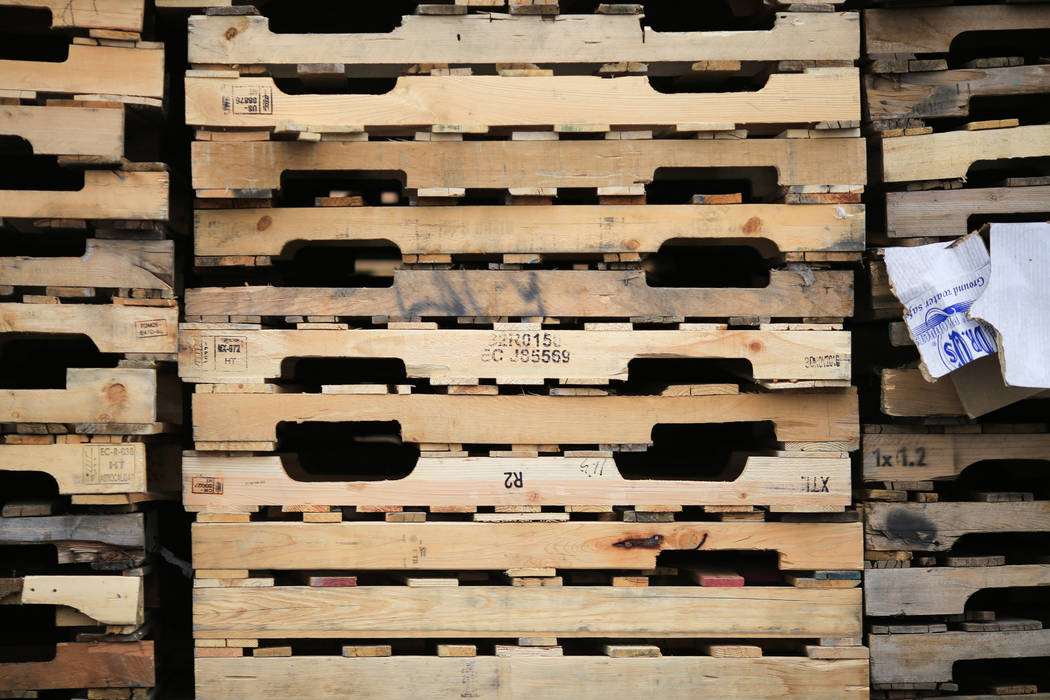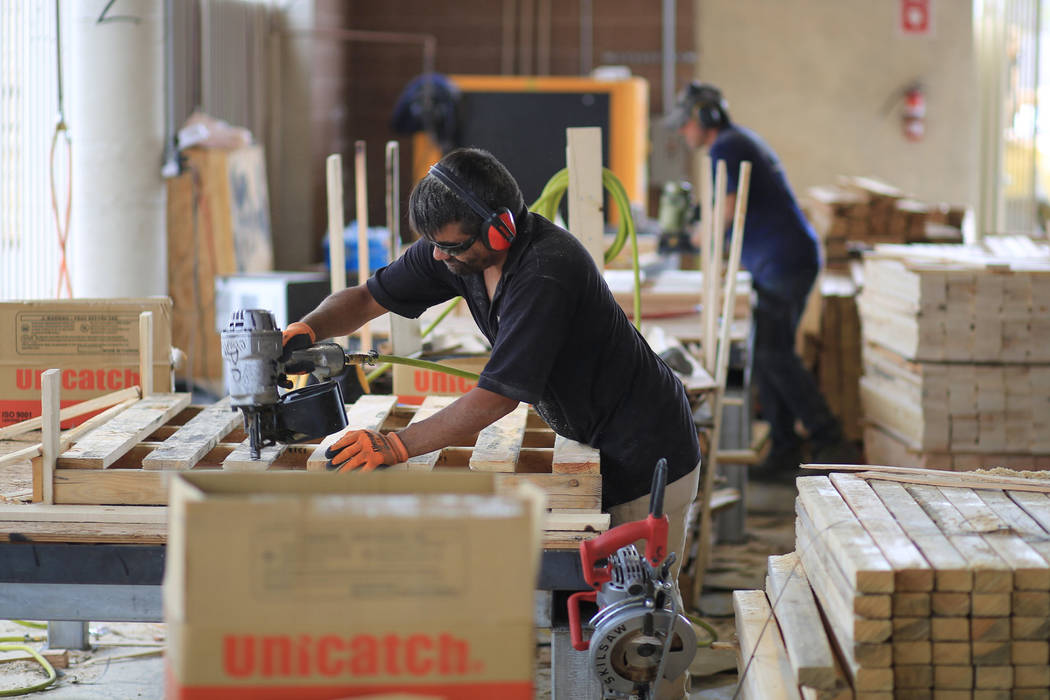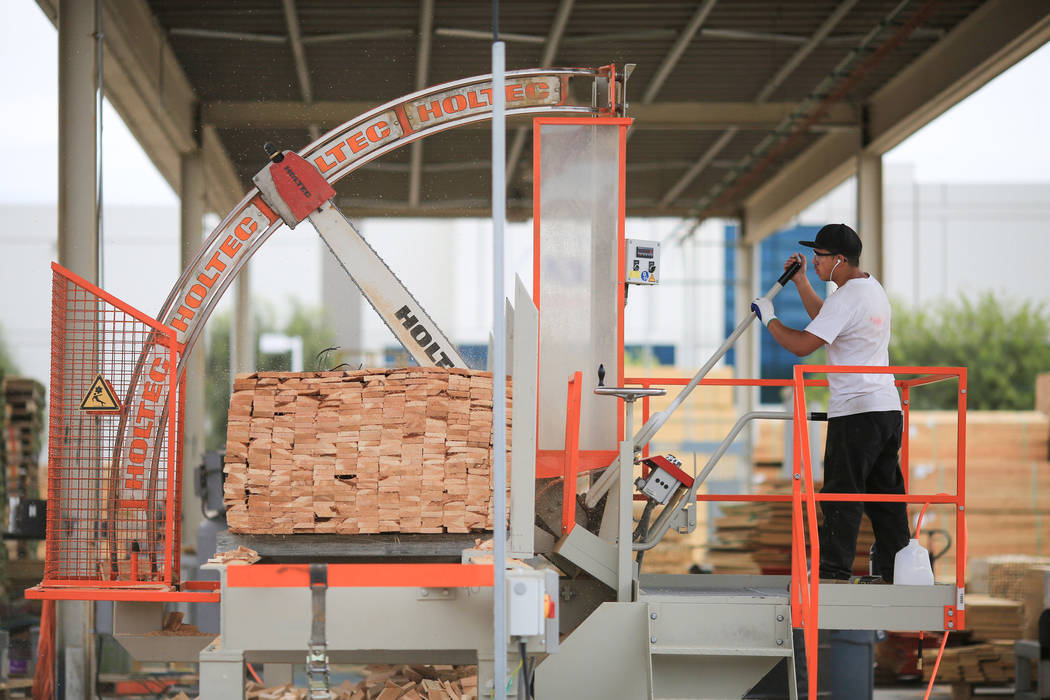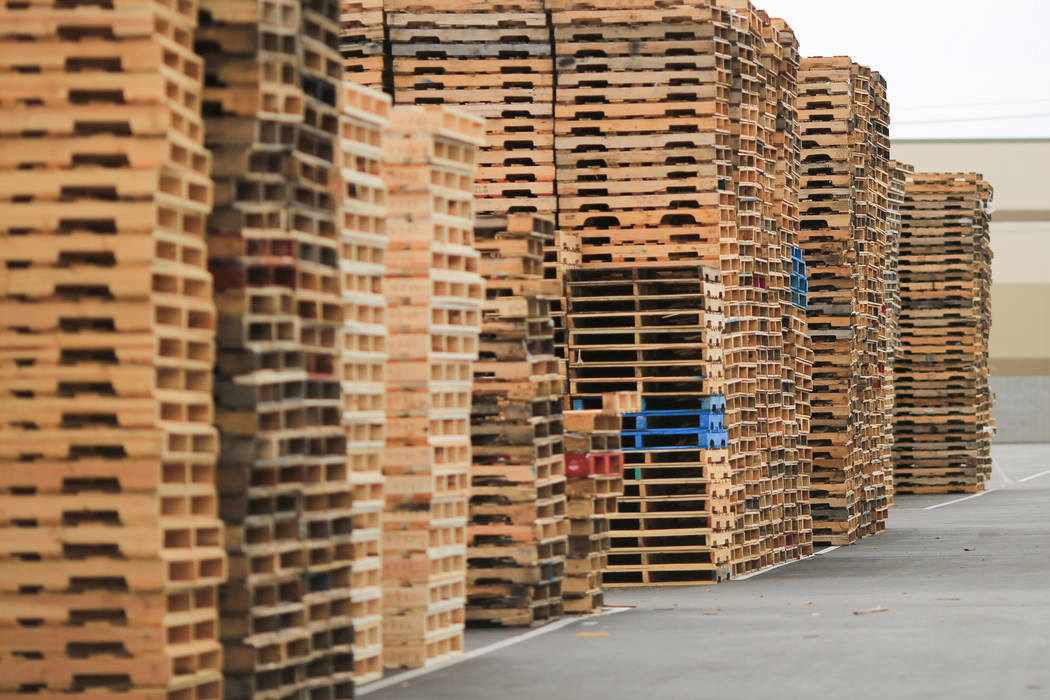Manufacturing growing again in Las Vegas economy
Ralph Knight took no small risk after the recession when he bought a business over a thousand miles away.
He moved his family from Seattle to the Las Vegas Valley, and jumped into a new career. The former custom homebuilder had high expectations for Power Pallets, a North Las Vegas manufacturer of portable wooden platforms used to move, stack and store goods.
“If this didn’t work out, I’d be starving,” he said.
Since Knight bought the company in 2011, Power Pallets has gone from $1.2 million in sales to $4.5 million last year, he said. It’s grown from about 15 employees to 35, adding a second shift.
Knight’s purchase of a manufacturing business appears to be paying off, and according to data from the U.S. Bureau of Labor Statistics, certain sectors within manufacturing have shown recent employment growth nationwide.
A mixed bag
Knight’s experience is unusual in the Las Vegas metropolitan area.
Steve Miller, a UNLV professor and director of its Center for Business and Economic Research, said bureau data show that employment for making wood products, such as pallets, and furniture declined the most among local manufacturing sectors.
Wood made up 3.25 percent of total manufacturing employment in the valley and declined in employment by 62.6 percent from 2001 to 2015, Miller said. Furniture made up 6.23 percent of total manufacturing employment and declined 45.6 percent in that same period.
The manufacturing segments that saw the fastest growth valleywide were food making and miscellaneous manufacturing, Miller said. Miscellaneous manufacturing includes items from tennis balls to dolls to jewelry to medical products.
Food averaged 12.3 percent of total manufacturing employment from 2001 to 2015. Miscellaneous manufacturing accounted for 21.3 percent of the valley’s total during that same period.
Manufacturing remains a small share of the careers people hold in the valley. In 2015, manufacturing accounted for 2.4 percent of the total employment in the valley, Miller said.
Manufacturing has increased every year since 2010, growing 15 percent to 43,600 jobs in 2016, according to data from the Nevada Employment, Training and Rehabilitation Department.
The valley has more manufacturing jobs than in 2002, but fewer than the number reported in 2003.
Fluctuating numbers
A downturn in total manufacturing started after 2006, when the valley peaked with 50,400 manufacturing jobs, about five times as many jobs in the valley in 1990, according to state numbers.
From 2005 to 2006, the valley saw its largest year-over-year gain in manufacturing jobs with 2,100 jobs added.
From 2008 to 2009, the valley saw its largest drop in manufacturing jobs with 4,300 jobs lost.
Manufacturing followed other sectors’ performances before and during the most recent recession, said Brian Gordon, a principal with research firm Applied Analysis.
The manufacturing of nondurable goods, such as food and medicine, has recovered faster than durable goods, such as refrigerators and cars, in the valley.
Nondurable goods hit an employment peak in 2016 at 9,500 jobs in the valley. Durable goods posted 12,600 jobs in the valley in that year, but that number is still less than in 2009, the end of the recession.
The growth in nondurable, or soft, goods likely comes from more consumer spending in retail. But efforts to draw large-scale manufacturers into Nevada, such as Faraday Future and Hyperloop One near North Las Vegas, have the potential to change the state’s economy, Gordon said.
Plus, the valley is home to a group of gaming and resort manufacturers, such as Konami and Ainsworth, positioned for growth as gaming enters new regions worldwide.
“While Las Vegas will not become — nor do we want it to be — a manufacturing-centric community like Detroit an increased presence is warranted and important to the long-run diversification of the economy,” he said.
Knight credits Power Pallets’ growth with the recovery in housing in Southern Nevada.
In wooden pallet manufacturing, margins are low and competition is high, Knight said. He mostly competes with companies outside the state that are trying to capitalize on a higher need for shipping as Nevada’s overall economy grows.
“I think we’re an excellent indicator for what’s happening in the rest of the economy,” he said.
Contact Wade Tyler Millward at wmillward@reviewjournal.com or 702-383-4602. Follow @wademillward on Twitter.
Nationwide trend differs
Over the past five years nationwide, 13 out of 20 sectors within manufacturing have shown job growth. Manufacturers of miscellaneous nondurable goods, such as farm supplies, books, paints and tobacco, saw the biggest increase with 25.4 percent more jobs.
That sector was followed by transportation equipment makers with 16.4 percent and wood product makers, such as Power Pallets in North Las Vegas, with 13.7 percent.
However, over the past 25 years, all forms of manufacturing are down except for food with a 1 percent growth.
The biggest drop from 1991 to 2016 came in apparel manufacturing at 85 percent. Apparel also showed the largest five-year drop in employment, losing 12.8 percent.
The smallest 25-year decrease came for fabricated metal with a 7.4 decrease in employment nationwide.



